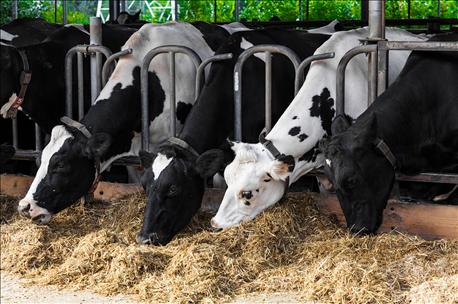
A friend ran across a movie he had never watched a few days ago. It was called Bitter Harvest, filmed for TV in 1981. It starred some well-known actors, including Ron Howard of Opie on Andy Griffith fame, Art Carney and other actors you would recognize but may not know the name.
Related: You should thank PETA and HSUS for what they've done for agriculture
More importantly, it depicted one of the most devastating agricultural disasters of modern times. The real-life story is about a young Michigan dairy farmer who experienced puzzling problems with his herd, and sought to get answers, often finding his path blocked by government officials of one sort or another.

The PBB disaster rocked the dairy industry in Michigan in 1973. Lessons learned then are still applicable today.
In hindsight the entire sad tale stemmed from a mistake at a plant that made various chemical products. The company manufactured magnesium oxide for cattle feed, and flame retardant for industry. The flame retardant contained PBB, a heavy and very toxic chemical.
You may be more familiar with PCS, a chemical authorities began looking for at about the same time, and which showed up in milk samples in Indiana. More on that next week from a personal recollection in part two of this blog – stay tuned.
Related: Indiana Livestock Traceability Rules for Jan. 1, 2015
You can Google the movie "Bitter Harvest (1981)" and find the details on the Internet, some 34 years after the movie debuted and 42 years after the incident.
Many practices have changed so that something like this should never happen again, but have enough practices changed? That one is up to you to decide.
Lessons from the 1970s PBB dairy incident >>
~~~PAGE_BREAK_HERE~~~
Here are lessons I remember from the incident, backed up by the movie and other factual posts on the Internet.
1. The bags containing the two very different products at the chemical plant were identical, stacked within a few feet of each other. Obviously, bar coding and different packaging has developed since then, hopefully making such an error far less likely. Humans, however, at some point, even if only in programming technology, are still involved.
2. The method of putting a calf down for an autopsy to investigate the cause was electrocution, right in the barn. That's been replaced by injections by licensed vets of a chemical that puts an animal to sleep quietly and humanely when it's necessary. Not every concept of animal welfare is wrong.
3. Testing in labs at that time was thought to be state-of-the-art, but as it turns out, the methods being used didn't look for such things as PBBs under normal conditions, because no one suspected a need to look for them. Today's technology allows these substances to be detected much more quickly.
4. Fear of panic caused state authorities to hesitate in going public quickly with the facts. As a result, many people in the state, many not on farms, ingested milk with PBB in the butterfat for a long time – much longer than necessary. The results will never be fully known, because it's impossible to be certain how many cancers and abnormalities actually linked to PBB ingested in dairy foods.
5. Traceability has improved one hundredfold since that time, especially in Indiana. It's one reason why every farm with livestock, even with 4-H animals, must have a premise ID registered with the Board of Animal Health. The system was designed in case an epidemic broke and cows need to be quarantined, but it would be useful for this type of situation as well.
You don't have to be 62 years old to appreciate the lessons in this story or in the movie. The friend who clued me into this and found it to be fascinating history isn't even 30 years old yet.
Next week, a far less known but just as true and sad tale involving my family and the dairyman I worked for in the early 1970s – join me next week.
About the Author(s)
You May Also Like




